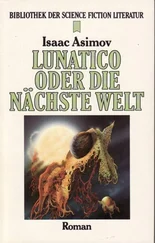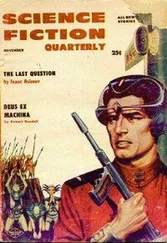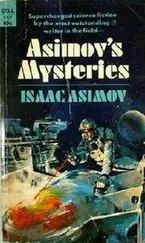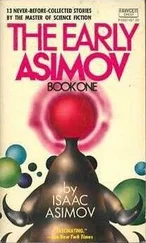Isaac Asimov - Asimov’s Guide To Shakespear. Volume 1
Здесь есть возможность читать онлайн «Isaac Asimov - Asimov’s Guide To Shakespear. Volume 1» весь текст электронной книги совершенно бесплатно (целиком полную версию без сокращений). В некоторых случаях можно слушать аудио, скачать через торрент в формате fb2 и присутствует краткое содержание. Жанр: Культурология, на английском языке. Описание произведения, (предисловие) а так же отзывы посетителей доступны на портале библиотеки ЛибКат.
- Название:Asimov’s Guide To Shakespear. Volume 1
- Автор:
- Жанр:
- Год:неизвестен
- ISBN:нет данных
- Рейтинг книги:4 / 5. Голосов: 1
-
Избранное:Добавить в избранное
- Отзывы:
-
Ваша оценка:
- 80
- 1
- 2
- 3
- 4
- 5
Asimov’s Guide To Shakespear. Volume 1: краткое содержание, описание и аннотация
Предлагаем к чтению аннотацию, описание, краткое содержание или предисловие (зависит от того, что написал сам автор книги «Asimov’s Guide To Shakespear. Volume 1»). Если вы не нашли необходимую информацию о книге — напишите в комментариях, мы постараемся отыскать её.
Asimov’s Guide To Shakespear. Volume 1 — читать онлайн бесплатно полную книгу (весь текст) целиком
Ниже представлен текст книги, разбитый по страницам. Система сохранения места последней прочитанной страницы, позволяет с удобством читать онлайн бесплатно книгу «Asimov’s Guide To Shakespear. Volume 1», без необходимости каждый раз заново искать на чём Вы остановились. Поставьте закладку, и сможете в любой момент перейти на страницу, на которой закончили чтение.
Интервал:
Закладка:
Tom Snout, the tinker, who deals largely with the repair of kettles, which are characterized by a snout (or spout).
Snug the joiner, an occupation which joins pieces of wood, it is to be hoped snugly.
Finally, there is Starveling the tailor, a name which is evidence that there has long been a tradition that tailors are weak, cowardly, effeminate creatures, perhaps because they work so much on women's clothes and because it is so easy to assume that a manly man would not be interested in such an occupation.
"… Pyramus and Thisby"
The six laborers have met in order to arrange the production of a play intended to celebrate the marriage of Theseus and Hippolyta. Quince announces the name of the play:
… our play is, "The most lamentable comedy, and most cruel death of Pyramus and Thisby."
—Act I, scene ii, lines ll-i;
The tale of Pyramus and Thisbe is found in Ovid's Metamorphose: (see page I-8) and has no known source beyond that.
Pyramus and Thisbe were a youth and maiden of Babylon who lived in adjoining houses and who loved each other but were kept separate by the enmity of their parents. They talked through a chink in the wall that separated the estates and arranged to meet outside the city one night.
Thisbe got there first, but was frightened by a lion and fled, leaving he: veil behind. The lion, who had just killed an ox, snapped at the veil, leaving it bloody. Pyramus arrived, found the lion's footprints and the blood; veil. Coming to a natural conclusion, he killed himself. When Thisbe re turned, she found Pyramus' dead body and killed herself as well.
There is a strange similarity between this tale and that of Romeo and Juliet, a play that was written at just about the time A Midsummer Night's Dream was being written. Did Shakespeare's satirical treatment of the Pyramus-Thisbe story get him interested in doing a serious treatment of it Was the serious treatment already written and was he now poking a little good-natured fun at it? We can never tell.
… play Ercles rarely …
The workmen are among Shakespeare's most delightful creations: nai'v and yet well-meaning. And of them all, the most naive and the best meaning is Bottom. Bottom no sooner hears the name of the play but he says, pompously:
A very good piece of work,
I assure you, and a merry.
—Act I, scene ii, lines 14-15
Since the tale of Pyramus and Thisbe was well known to any Elizabethan with the slightest education, and known to be an utterly tragic one DBF signed for reducing softhearted maidens to floods of tears, Bottom's own characterization of it reveals him at once. He is illuminated as the cock sure know-it-all who knows nothing; the fool who thinks himself CIS, and yet who, through the very enormity of his folly, makes himself lovable. The workmen are each assigned a role in the play and Bottom is given the part of Pyramus the hero. Despite Bottom's pretense of knowledge concerning the play, it promptly turns out that he doesn't know what kind of part Pyramus is. He is told that Pyramus is a lover and he is wistful over the possibility of other roles, saying:
… my chief humor is for a tyrant.
I could play Ercles rarely, or a part
to tear a cat in, to make all split.
—Act I, scene ii, lines 29-31
"Ercles" is Bottom's mispronunciation of Hercules (and much of the humor in Shakespeare's plays rests with the mangling of the English language by the uneducated-something sure to raise patronizing chuckles from the better classes in the audience).
Hercules (Heracles) was the greatest of the legendary heroes of the Greeks. He was a child of Jupiter (Zeus) by an illicit amour with a mortal woman. He thus incurred the vengeful enmity of Juno (Hera). As a result of a crime committed during one of his periodic fits of madness, he was condemned to perform twelve labors for an unworthy relative, Eurystheus, King of Argos.
The tale of his labors (which may originally have been inspired by the progress of the sun through the twelve constellations of the zodiac) were elaborated and interlarded before, between, and afterward by so many additions illustrative of his superhuman strength that Hercules became the most storied individual in Greek legend. He remained popular through all succeeding ages.
Since Hercules' forte was sheer brute strength, mingled with madness, he had to be played broadly with a rolling, bass voice, with rage and threats and much flexing of muscles.
The poorer plays of Elizabethan times were notorious for overacting, something beloved of the lower classes. Certainly Hercules could scarcely be portrayed satisfactorily without overacting, and it was just the sort of role a lovable dimwit like Bottom would yearn for and want to portray.
The "part to tear a cat in, to make all split" is probably a reference to Samson, the Israelite analogue of Hercules. At one time, the young Samson encountered a lion. "And the Spirit of the Lord came mightily upon him, and he rent him as he would have rent a kid, and he had nothing in his hand" (Judges 14:6). Samson would clearly have suited Bottom every bit as much as Hercules would have.
The remaining parts are then given out, with the proceedings interrupted at every point by Bottom's yearnings to play each part as it is described, offering to do it in any way that might be desired. It is only when he is told how unimaginably handsome Pyramus is that Bottom recognizes that only he can play the young man and reconciles himself to the task.
They then all agree to rehearse the play secretly in the wood outside Athens so that no outsiders learn their plans and steal their thunder (the same wood ha which Lysander and Hermia have been scheming to meet).
… the moon's sphere
The second act opens in this very wood, but with neither the well-born lovers nor the low-born actors in view. The wood is already occupied and we are now introduced to still another strand of plot, one that involves sheer fantasy, for it concerns fairies (drawn from Celtic legend rather than Greek mythology, but that doesn't bother anybody).
Two spirits meet to open the act. The more grotesque spirit asks the more graceful one (named simply "Fairy") where it is going. The answer is, in part:
I do wander everywhere,
Swifter than the moon's sphere;
—Act II, scene i, lines 6-7
Here we have a little Greek astronomy. The Greeks believed that the sun, the moon, and the various planets were each set in a transparent sphere. The various spheres were nested one beyond the other, all centered on the earth, which was the very core and midpoint of the universe.
The spheres moved in various complicated fashions and the end result was to cause the heavenly object attached to it to move against the back-ground of the stars in the fashion observed by human astronomers. The smaller, inner spheres turned more rapidly than the larger, outer ones. The moon was attached to the innermost, smallest sphere and therefore, since that sphere turned most rapidly, it moved against the stars most rapidly. -The Fairy boasts it can move even swifter than the swiftest heavenly body, the moon and its sphere.
The notion that all the spheres turned about the earth as a center was seriously challenged by the Polish astronomer Nicholas Copernicus in 1543. The issue was strongly disputed and was not finally settled in favor of Copernicus till after Shakespeare's death. Indeed, Copernicus' theory was not inconsistent with spheres (centered about the sun, rather than the earth) and it was not till Kepler showed that the planets moved in elliptical orbits (in 1609) that the notion of the celestial spheres began to die.
Читать дальшеИнтервал:
Закладка:
Похожие книги на «Asimov’s Guide To Shakespear. Volume 1»
Представляем Вашему вниманию похожие книги на «Asimov’s Guide To Shakespear. Volume 1» списком для выбора. Мы отобрали схожую по названию и смыслу литературу в надежде предоставить читателям больше вариантов отыскать новые, интересные, ещё непрочитанные произведения.
Обсуждение, отзывы о книге «Asimov’s Guide To Shakespear. Volume 1» и просто собственные мнения читателей. Оставьте ваши комментарии, напишите, что Вы думаете о произведении, его смысле или главных героях. Укажите что конкретно понравилось, а что нет, и почему Вы так считаете.







